with the 1859 McClellan Saddle.
From Congdon's Cavalry Compendium ~ 1864 ~ pages 101-103
James A. Congdon was a Major in the 12th PA Cavalry when he compiled and published his Cavalry Compendium in 1864.
This portion on tacking with the McClellan equipments is a little different from the methods described in prior manuals
for earlier saddles. One paticular point is placing the saddle on the horse from the off-side. In practice it's a sensible alteration to the old way.
A single statement in the Preface, I think, goes a long way to justify our
doing it in this manner: "Much of the instruction here contained, although observed for many years in the regular cavalry, has never before appeared in print."
So, here is Congdon on saddling, word-for-word
Evolutions performed by trooper David Myrick, 1st Maine Cavalry with Mathew Seasock and Sonny
Manner of Folding the Saddle-Blanket.
Double the blanket lengthwise, then fold it in three equal parts: when folded it will then be in six thicknesses.
Manner of Saddling with McClellan Saddle.
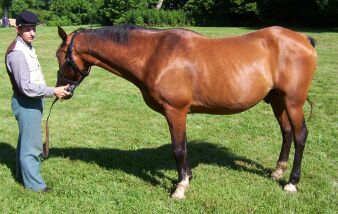
Approach the horse on the near side, lay on the saddle-blanket; seize it then with the left hand on the withers,
and with the right on the loins; slide it once or twice from front to rear, to smooth the hair, taking care to raise
it in carrying it forward, so as not to brush up the hair.
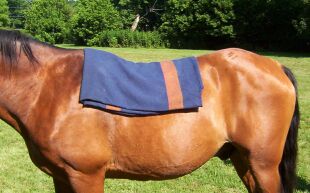
Throw the girths over the seat of the saddle, the stirrups and also the crupper. Seize the pommel of the saddle
with the right hand, the cantle with the left; approach the horse from the rear on the off-side, place it on the
horse's back a few inches in rear of it's proper place,
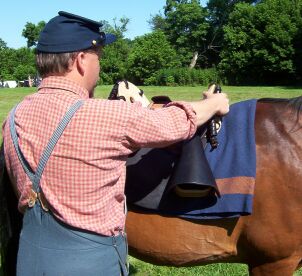
lay back the crupper, let down the stirrups and girth, regulate the latter if necessary.
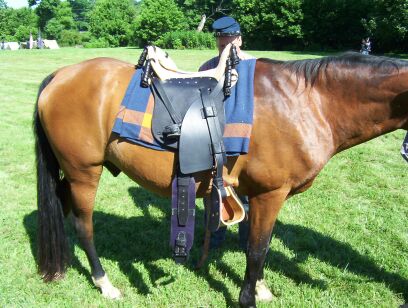
From behind the horse, sieze the tail with the left hand and twist the hair around the dock with the right hand, which then seizes the crupper and passes the tail through it, taking care that none of the hair remains under it, which would hurt the horse.
Pass to the near side, regulate the length of the crupper if necessary, carry the saddle forward to within three inches of the point of horse's shoulder.
Sieze the ring of the girth in the left hand, the strap in the right hand, pass the strap down through the ring
from inside to outside,
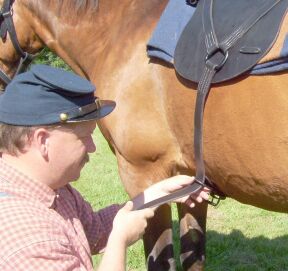
bringing it up and passing it down throught the D ring of the saddle, from outside to inside, then down again through the girth-ring into the buckle;
tighten the girth as tight as you can conveniently draw it without wrinkling the skin of the horse.
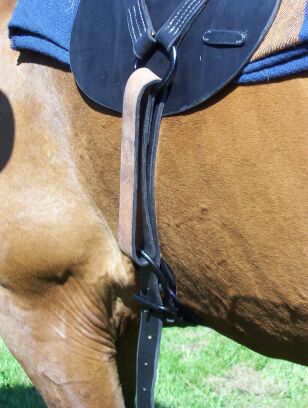
Pass the circingle over the saddle, buckle it tightly on the near side in rear of the girth.
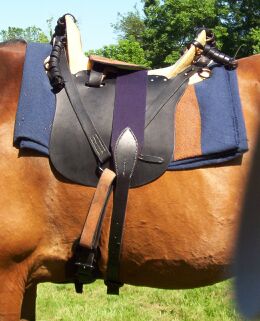
To unsaddle, proceed in a reverse order to the above.
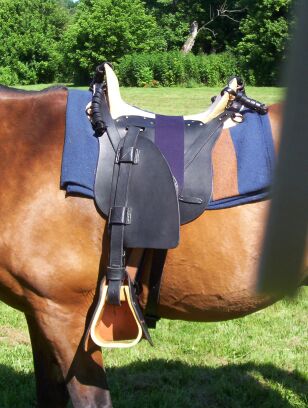
Manner of Bridling.
Stand on the left side of the horse, the reins of the bridle in the bend of the left arm, the top of the headstall
on the fore-arm; seize the bridle by the top of the headstall with the right hand, the nails downward; pass the the
right arm over the horse's neck so that the hand may be in front of his head; seize the bit with the left hand near
the boss, place it in the horse's mouth, placing the left thumb on the bars of the mouth to make him open it;
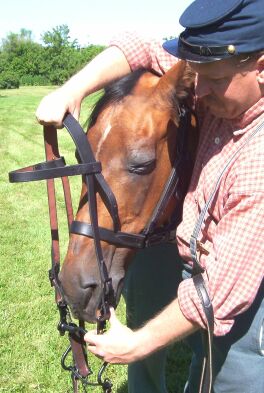
pass the horse's ears through the headstall, hook the curb, buckle the throat strap loosely,
and throw the reins over the horse's head.
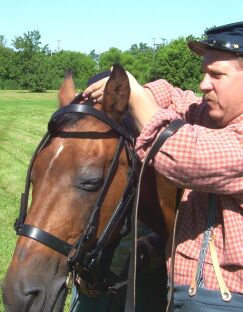
Attach the halter strap rolled up to the ring, on the left side of the saddle.
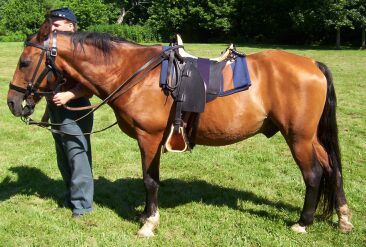
To unbridle, proceed in a reverse order to the above.
Manner of Placing the Effects on the Saddle.
Place the overcoat on the front of the saddle, lining down, pocket towards the rear
Buckle the centre strap so tightly the the coat cannot touch the withers, then buckle the other straps as tightly as possible.
Fasten the blanket to the cantle in the same manner as the overcoat.
The currycomb, brush, extra horseshoes, etc. should be carried in the saddle-bags.
The nose-bag, when used, may be attached to the off side of the pommel.
The haversack may be attached to the pommel on the near side.
The canteen should never be attached to the saddle.
The effects should always be removed before the saddle is taken from the horse.
Top